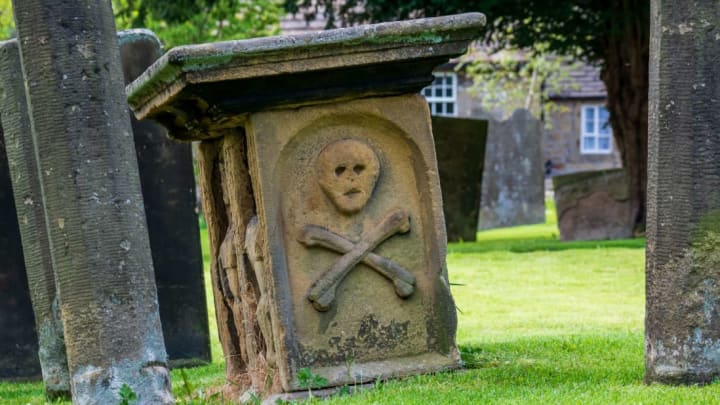When George Viccars, a tailor’s assistant, set a parcel of cloth near a fire to dry, he never could have known it would unleash a disease that would kill hundreds of people.
Like the surrounding villages, Eyam, England—a farming settlement of roughly 800—was vulnerable when the bubonic plague, or Black Death, arrived on its doorstep from London in August 1655. But unlike the other villages, Eyam’s actions during the 14-month outbreak became historically and medically important in the fight against communicable diseases for hundreds of years to come.
When the Plague Came to Eyam
As the frequent pandemics that swept through Europe since the 14th century can attest, bubonic plague was highly transmissible and nearly always fatal—and like pandemics today, it was spread via trade routes. In the 17th century, no one knew what caused plague; ideas about its origins included a punishment sent by God, or miasma (bad air). People had many ideas about saving themselves from the Black Death, including prayer and repentance of sins, smoking tobacco, or clearing piles of rubbish. Some carried pomanders stuffed with herbs, spices, and flowers to sniff and thus alleviate the effects of the “bad air.”
The true cause of bubonic plague, however, was bacteria spread by fleas—and unbeknownst to Viccars, the damp cloth he dried near the fire was infested with them.
Viccars was bitten and, on September 7, became the village’s first plague casualty; within days, his stepsons and his employer, Alexander Hadfield, were also dead. Throughout the end of 1665, people continued to fall ill and perish as the disease swept through the village.
In the spring of 1666, William Mompesson, Eyam’s newly appointed vicar, united with the parish’s former vicar, Thomas Stanley, to set in motion a plan that would prevent the plague’s spread to surrounding villages. They convinced the villagers to set up a cordon sanitaire—a quarantine zone—and asked them to stay within its boundaries. Signs posted at the borders warned outsiders to stay away. It wasn’t a new idea: Quarantine was practiced in Biblical times with leprosy patients and used in other instances of the plague in Italy since the 1400s. But by the time the plague hit Eyam in the 17th century, quarantine still wasn't common in England [PDF]. It's likely, however, that the well-educated Mompesson knew of the practice.
How Eyam Beat the Plague
Eyam wasn't self-sufficient—the locals traded with nearby communities—so the town's residents enlisted the support of the Earl of Devonshire and surrounding villages to create a system to obtain needed supplies. They placed a Boundary Stone at the southern border between Eyam and its nearest neighbor, Stoney Middleton, which they used as a drop-off point for necessities. The large rock had six holes drilled into it. Coins to pay for supplies were dropped into holes filled with vinegar, which was believed to kill infection. (The stone still sits at that border today.)
Mompesson’s plan also included holding church services outside—today’s social distancing—as he understood there was less chance of transmission in open spaces. People have suggested avoiding person-to-person contact to fight the Black Death since the 14th century, though we now know pneumonic, not bubonic, plague is more likely to spread via respiratory droplets.
To further discourage people from congregating, villagers were tasked with burying their dead themselves as quickly as possible, and as close to the site of the death as possible. In one sad case, Elizabeth Hancock’s husband and all six of her children died within the space of eight days, and she had the unimaginable task of dragging the bodies from her farmhouse to a nearby field to bury them alone. Entire families were lost to the disease, including all nine members of the Thorpe family, who died between September 1665 and early summer of 1666.
Lessons from Eyam
A total of 260 people perished of plague within Eyam. The last died on November 1, 1666, a little more than a year after the disease first hit the village. When the plague was over, Mompesson’s final act was to encourage villagers to burn their clothing, furniture, and bedding and fumigate their houses to eliminate any potential remaining threat.
While Eyam paid a very high price, the village’s sacrifice likely saved thousands of lives across the north of England. According to The Washington Post, the plague did not spread beyond Eyam's borders.
The small community's drastic response had even larger, more lasting effects (beyond Eyam's reputation as England's "plague village"): Mompesson’s foresight influenced later medical practice, as quarantine became the norm in inhibiting the spread of diseases from polio to Ebola and COVID-19, while placing coins into vinegar mimics modern sterilization techniques.
